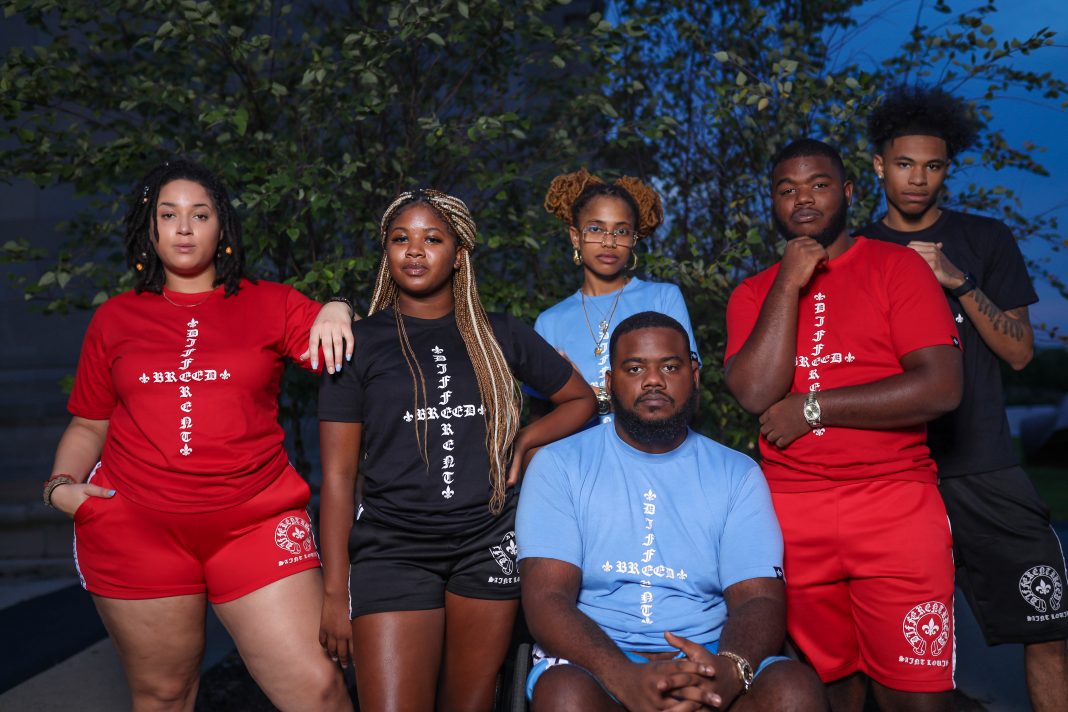A Brief History Of Clothing And Fashion:
Have you ever wondered what people wore before clothing was invented? According to anthropology, clothing was originated between 100,000 and 200,000 years ago. To keep themselves warm and safe, people used to wrap themselves with fur, grass, or leaves. The concept of gendered clothing was not yet a thing; people wore anything they could get their hands on and made do with. It wasn’t about defining themselves but being efficient with what they had.
So how exactly did gender make its way into clothing and fashion?
Men and women wore an identical tunic-styled dress defined by class rather than gender before clothes were gendered. However, after the 17th century, we began to see a difference in men’s and women’s dress. It established a precedent that, 400 years later, is still being widely followed around the world. This trend was developed by seamstresses who specialized in women’s fashion and separated themselves from tailors who were regarded only for males. That’s mainly how clothes were gendered. Fashion became for women and tailoring for men.
The relationship of gender and clothing:
The terms sex and gender are not interchangeable, even though they are sometimes used interchangeably. Sex is the biological and physiological difference between males and females. The socially constructed features of women and men, such as norms and roles in society, are what gender refers to.
When we talk about gender and clothing, we must consider culture and region. Many gender roles and identities worldwide stem from cultural and religious norms worldwide for men and women. But gender and clothes should not have any relationship if we speak in isolation. For example, we can’t specify that only women are supposed to wear skirts because Scottish people will disagree as it’s a longstanding tradition of theirs.
So clothes don’t really have a gender; it depends on how and where you look at them. Clothing is approached differently all around the world. However, we might be stepping into the era of genderless or unisexual clothing.
What is Androgynous Clothing?
The term “androgynous” comes from the Latin word “androgyne” and refers to a person who has a mixture of masculine and feminine physical traits. Androgynous fashion, in this sense, refers to mixed-gender apparel and accessories. The goal here is to represent non-binary gender identity by avoiding making a visual distinction between masculine and feminine physical traits.
With the growing trend of streetwear, it’s safe to say that androgynous fashion is not that far in the future. You see the same clothing identities worn by both men and women, and you see androgyny in casual clothes and daily wear. It’s becoming increasingly popular as celebs join in on the trend.
Women’s attire may have become more masculine due to the unisex movement without becoming unfeminine. In reality, the contrast between the wearer and the garments is part of the attractiveness of unisex fashion.
As a result, androgynous clothing is neither feminine nor masculine but rather gender-inclusive and sexually neutral, and the trend seems to be growing.
Celebrities Promoting Gender Neutrality
It’s no secret that celebrities significantly impact society, particularly a young mind. Most people will argue that celebrities’ use of substances and the body image they promote directly affects a teen’s mental health. More often than not, it’s harmful. But sometimes, it can be positive as well.
There are a few celebrities that do advocate for good views, such as gender neutrality. It can be viewed as a constructive impact on today’s children, as it helps them expand their minds to a broader horizon, develop their individuality, help them find their identity, as well as embrace others. It also reassures them that they are not alone.
Celebrities in Hollywood and the music business have helped bridge the gender gap in fashion. Celebrities that advocate for such causes benefit society more than anyone else. Celebrities such as Tilda Swinton have promoted androgynous style. In the twenty-first century, we witness Harry Styles and Kid Cudi donning gowns to their live performances, bringing forth the idea that gender-specific clothing is merely a social construct that no longer and should not retain any relevance in the time to come.
It is safe to conclude that we are stepping into an era of androgynous clothing, with both established and young brands emerging that embrace and normalize this trend. It is a wonderful thing to hope and strive for a society that accepts people for who they are rather than what they wear.

